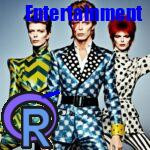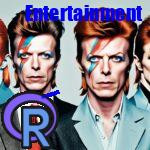David Bowie Eyes were a key part of his unique look. His bright blue right eye and darker left eye made fans and critics take notice. This look added to his otherworldly image1.
He had a rare condition called anisocoria, which made his left pupil always look big1. This made it seem like his eyes were different colors. This unique look made his gaze unforgettable.
In 1962, Bowie got hurt in a fight and his left eye was damaged1. This injury led to anisocoria, adding to his mystique. He used his unique eyes in his performances, making his stage presence even more captivating1.
Key Takeaways
- David Bowie’s distinctive eyes were a result of a medical condition called anisocoria, which caused his left pupil to be permanently dilated.
- The eye injury that led to anisocoria gave Bowie a captivating mystique and enhanced his iconic image.
- Bowie embraced his mismatched eyes, incorporating them into his performances and enhancing his enigmatic persona.
- Bowie’s eyes were not due to the rare condition of complete heterochromia, where each iris is a distinctly different color.
- The red-eye effect caused by light reflecting off his dilated left pupil further contributed to the appearance of his eyes having different colors.
The Captivating Mystique of David Bowie’s Heterochronic Eyes
David Bowie’s eyes seemed to be two different colors, but it was more complex than that. He didn’t have true heterochromia iridum, where each iris is clearly different in color. Instead, his unique look came from a condition called anisocoria2.
Exploring the Genetic Condition Behind His Distinctive Appearance
Anisocoria is a rare condition that makes one pupil bigger than the other. This was Bowie’s case, with his left pupil always wide open. This made his left eye look darker compared to his right eye’s bright blue2. The effect also caused his eye to appear ‘red’ under light, adding to his mysterious look2.
How Anisocoria Contributed to Bowie’s Iconic Gaze
Bowie got this condition from a fight in 1962, when he got punched in the eye2. Instead of seeing it as a flaw, he embraced it. He used it in his stage persona and on album covers, like “Heroes.”2 His damaged left pupil became a key part of his mysterious image2.
“Bowie’s anisocoria was attributed to a fateful fight in 1962, where he was accidentally punched in the eye.”
Many might have seen Bowie’s unequal pupils as a weakness, but he saw them as a strength. He used them to create his larger-than-life image. The mystique of Bowie’s eyes, showing his acceptance of his unique look, has left a lasting impact.
Unraveling the Mystery: The Truth Behind Bowie’s Mismatched Eyes
David Bowie’s unique eyes caught everyone’s attention, thanks to a 1962 incident when he was 15. He got into a fight with his best friend George Underwood over a girl, and Underwood accidentally hit Bowie’s left eye, damaging the iris muscles for good.3 This made Bowie’s left pupil stay wide open, making his eyes look like they were different colors. This is called anisocoria4.
The injury was an accident, but Bowie said it helped make him stand out3. His unique look became a key part of his famous image. Fans loved it, and it added to the mystery of this legendary musician.
The Fateful Fight that Changed His Appearance Forever
The fight that changed Bowie’s look was over a girl. Bowie and George Underwood both liked the same woman, leading to a fight where Underwood accidentally hit Bowie’s left eye.3 This event changed Bowie’s life and his image forever.
The damage made Bowie’s left pupil always look wide, making his eyes seem different colors4. This became a key part of his famous look. It added to the mystery and intrigue around him.
The fight with his friend led to Bowie’s unique eyes3. This look became a big part of his mysterious persona. It made him stand out on stage and helped him be different from others.
“The injury was a mere accident, but it ended up contributing significantly to my enigmatic and compelling appearance.”
– David Bowie
David bowie eyes: An Intrinsic Part of His Enigmatic Identity
David Bowie’s eyes were a key part of his unique identity. They helped shape his iconic look and added to his otherworldly persona5. His gaze, made more striking by a permanently dilated left pupil, was a big part of his stage presence5.
He used makeup and lighting to make his eyes stand out even more5. After a fight in 1962, his left pupil got damaged. This became a key part of his image, adding to the mystery of Ziggy Stardust6.
Bowie’s eyes were famous for being different colors, with his right eye blue and the left dark or brown6. This feature was highlighted in ads for his album “Blackstar,” showing how important it was to his image6.
His friendship with George Underwood, who caused his mismatched eyes, added to the mystery of his look6. Bowie’s eyes became a key part of what made him stand out. They left a lasting impact on his career56.
| Artist | Studio Albums | Singles | Soundtracks | Music Videos |
|---|---|---|---|---|
| David Bowie | 27 | 128 | 4 | 72 |
“The different colored eyes have been described as one of the enduring legends behind Bowie’s distinctive and enigmatic identity, contributing to his unearthly aura and the persona of Ziggy Stardust.”
The Aladdin Sane Effect: Bowie’s Eyes on Iconic Album Covers
David Bowie’s eyes were a key part of his famous album covers, like “Aladdin Sane.” His left pupil looked bigger, and his right eye shone bright blue. This look made his eyes seem otherworldly, fitting his mysterious image7.
To get this look, Bowie’s manager wanted the best photo treatment for the “Aladdin Sane” cover7. Photographer Brian Duffy used a top-notch Kodak dye transfer process. This made Bowie’s eyes stand out even more7. The result was a photo that grabbed people’s attention for years.
The “Aladdin Sane” cover was taken on January 13th at Duffy’s studio in London7. For almost 40 years, it was the main image people saw7. In 2010, Bowie let out a different photo for a book and an exhibition7. In 2020, another photo from the shoot was used for a magazine, adding to the album’s legacy.
The “Aladdin Sane” cover is known for its big impact on art and culture. It ranked #23 on Billboard’s “The 50 Greatest Album Covers of All Time”8 and #48 on Rolling Stone’s “100 Greatest Album Covers.”8 The special photo technique used is now seen in comic books too8.
Bowie’s eyes on the “Aladdin Sane” cover show his creativity and lasting impact7. Chris Duffy, Brian Duffy’s son, calls it the “Mona Lisa of pop music”7. It captures Bowie’s unique and mysterious charm.
Beyond Perfection: Embracing the Uniqueness of Bowie’s Physical Traits
David Bowie stood out in an industry obsessed with looks. He celebrated his unique eyes and other traits instead of hiding them9. This choice made him a standout and captivated his fans9.
Bowie’s bold move to defy beauty standards was a big part of his charm in the 70s and 80s9. His music spoke to different sides of sexuality and self-expression9. This encouraged fans to be true to themselves and celebrate their uniqueness9.
After Bowie passed away, fans shared a lot online, showing his wide appeal9. His confidence in his looks inspired others to do the same9. He showed that being different is okay and even beautiful9.
“Bowie’s music connected with people from different walks of life, evidencing his impact on the wider music landscape.”
Bowie’s music touched many artists, like Lou Reed and Iggy Pop, showing his big influence9. His boldness in being himself has made him a lasting icon of self-expression and creativity.
From Mystique to Misfortune: Bowie’s Unlucky Ocular Incidents
David Bowie’s unique eyes1 were a mystery and a source of intrigue. Yet, he faced many eye-related problems during his career. These issues showed that even famous people can face eye troubles.
The Lollipop Incident and Other Eye-Related Mishaps
In 1991, Bowie got hurt during a show when a cigarette packet hit his left eye10. The most shocking event was in 2004 at the Norwegian Wood Festival. A lollipop thrown from the crowd got stuck in his eye, leading him to call out the person who did it10. These incidents showed how vulnerable Bowie’s famous eyes were.
Bowie had a condition called anisocoria that made his left pupil look bigger1. This, along with damage from a 1962 fight1, made his eyes stand out. Despite these problems, his unique look stayed a big part of his legend.
“I don’t know where I’m going from here, but I promise it won’t be boring.”
The Enduring Legacy of David Bowie’s Iconic Eyes
David Bowie’s eyes have made a lasting impact on popular culture, making him a true icon11. His gaze, with the always wide left pupil, is linked to his big persona and lasting effect. From his album covers to his live shows, Bowie’s eyes are a key part of his visual legacy. They inspire artists and fans, showing the mystery of his unique look.
Bowie’s eyes were more than just a look; they showed his artistic spirit and his refusal to fit in12. The always wide left pupil, from anisocoria, made him seem to have two different colored eyes. This added to his mysterious aura.
But Bowie’s eyes also stood for his strength and the beauty of being different12. After a childhood fight caused his left pupil to stay wide, he didn’t let it get him down. Instead, he made it a key part of his famous look. This showed his boldness in the entertainment world.
Even after he passed away, David Bowie’s eyes still amaze and inspire fans all over the world12. His unique look has become a lasting symbol. It shows the power of being yourself and how art can change us. Bowie’s eyes remind us that true icons are those who accept and show their unique qualities.
Exploring the Symbolism and Artistry Behind Bowie’s Heterochromia
David Bowie’s unique eyes, with their different colors, were deeply symbolic and artistic13. Fans wondered for years if Bowie had different colored eyes13. In 2010, Brian Eno, a long-time collaborator, revealed the truth about this mystery13.
Bowie got his mismatched eyes from a childhood injury that scarred his left iris14. This made his eyes stand out and became a key part of his image14. The mix of his big left pupil and the bright blue of his right eye made him seem otherworldly15. This matched his love for the unusual and added to his mystique15.
Bowie’s eye color greatly influenced his stage presence and art13. His unique look, along with his changing personas and style, inspired many artists and designers13. Bowie showed the power of being different and expressing oneself uniquely13.
“His eyes, those mismatched orbs, became a canvas for exploring themes of duality, identity, and the exploration of the unknown.”
How His Eyes Reflected His Embrace of the Otherworldly
Bowie’s heterochromatic eyes were a key part of his mysterious and captivating image13. The book “BOWIE: Stardust, Ray guns & Moonage Daydreams” explores his Ziggy Stardust era15. It shows his iconic looks and moments, with reactions and dialogue15. The book’s artwork highlights Bowie’s artistic growth, showing his love for the unusual15.
Bowie’s eyes symbolized his artistic side, showing his desire to explore the unknown13. Through his personas and style, Bowie made a big impact on music, art, fashion, and even finance15. He showed how creativity can push beyond limits15.
The Science Behind Heterochromia and Anisocoria
David Bowie’s eyes were famous for their unique look, thanks to a rare condition called anisocoria. This made his left pupil always bigger than the right because of an injury he got as a teen16.
True heterochromia, where each iris is a different color, is rare in humans. But Bowie’s case was different17. The science behind his eyes offers a peek into what made his gaze so captivating and mysterious.
Understanding the Biological Mechanisms Behind Bowie’s Condition
Heterochromia, where eyes have different colors, is more common in animals like Huskies and Border Collies17. In people, it usually happens by chance or from eye damage during pregnancy or birth17.
Certain syndromes like Waardenburg syndrome can also cause heterochromia17. If one parent has the gene, there’s a higher chance of passing it on17.
Bowie’s eyes weren’t truly heterochromatic, but had anisocoria from an injury in 196216. This made his left pupil stay wide open. It was from a fight that hurt his eye, causing his famous blue and black eyes16.
This injury also had a big visual effect, making his left eye look red in photos16. But it also led to a strong creative partnership with his friend Underwood16.
Learning about heterochromia and anisocoria helps us see how David Bowie’s unique eyes became a key part of his identity. It shows the fascinating science behind his look.
Iconic Photographs Capturing the Allure of Bowie’s Mismatched Eyes
David Bowie’s eyes were the focus of many iconic photos, making him a cultural legend18. Images like the “Aladdin Sane” album cover and the “Heroes” portrait show his unique gaze19. These photos highlight the emotion and art in his eyes, adding to his visual legacy.
Bowie’s eyes were unique because of a childhood injury18. Photographers worldwide were drawn to their contrast, making his visual legacy unforgettable.
His album covers and portraits show his bold and deep essence19. These images prove Bowie was a true visionary, with eyes that showed his creativity and deep character.
The “Heroes” cover and “Aladdin Sane” artwork feature Bowie’s striking eyes1819. These images are key to his fans’ memories. They inspire new artists and fans, keeping Bowie’s legacy alive.
“Bowie’s eyes were a window into his boundless creativity and profound depth of character.”
Conclusion: The Lasting Impact of David Bowie’s Unforgettable Eyes
David Bowie’s eyes were more than just a look; they were a key part of his legendary identity and lasting cultural impact20. The striking difference between his left and right eyes made his gaze unforgettable. This gaze inspired many artists and fans, showing the unique power of his look.
His album covers, like “The Rise and Fall of Ziggy Stardust and The Spiders from Mars”20, and his live shows, especially the 1972 Ziggy Stardust tour in the US20, showcased his unforgettable eyes. These eyes mirrored his love for the extraordinary, showing his artistry and mystique. This made him a true pioneer in music and culture.
Throughout his career, Bowie changed genres and personas, from “The Man Who Sold The World”20 to “Let’s Dance”21. Yet, his eyes stayed a symbol of his lasting legacy. His unique eyes, with heterochromia and anisocoria, were key to how people saw and admired him2021. David Bowie’s eyes will keep inspiring people for years to come, proving the lasting effect of his art and the value of being true to oneself.
FAQ
What condition caused David Bowie’s distinctive eye appearance?
David Bowie had a condition called anisocoria, which made his pupils different sizes. His left pupil was always wide, making it seem like his eyes were different colors.
Was Bowie’s eye condition the same as true heterochromia?
No, Bowie’s eyes weren’t truly heterochromatic, where each iris is a different color by birth. His issue was his left pupil staying wide all the time.
How did Bowie’s eye condition originate?
Bowie got his unique eyes from a fight with his friend George Underwood in 1962. Underwood hit Bowie’s left eye, hurting the iris muscles. This made his left pupil stay wide.
How did Bowie’s eyes become an integral part of his iconic identity?
Bowie’s eyes, with their wide left pupil, became a key part of his mysterious look. He used makeup and lighting to make his eyes stand out even more.
Where were Bowie’s eyes prominently featured?
Bowie’s eyes were on many famous album covers, like “Aladdin Sane” and “Heroes”. The big difference between his pupils made his eyes look otherworldly.
Did Bowie ever face any unfortunate ocular incidents?
Yes, Bowie had some eye problems, like a cigarette packet hitting his eye in 1991. He also got a lollipop stuck in his eye at the Norwegian Wood Festival in 2004.
What was the symbolic and artistic significance of Bowie’s heterochronic eyes?
Bowie’s eyes were more than just a medical condition. They symbolized something otherworldly. The difference between his pupils showed his love for the unusual.
How did the science behind Bowie’s eye condition contribute to his iconic appearance?
Bowie’s eyes came from a rare condition called anisocoria, making his left pupil always wide. This science behind it shows how his unique gaze became iconic.
How have iconic photographs captured the allure of Bowie’s distinctive eyes?
Many famous photos have shown off Bowie’s amazing eyes, like the “Aladdin Sane” cover and the “Heroes” portrait. These pictures highlight the special look and feelings his eyes showed.
Source Links
- The remarkable story behind David Bowie’s most iconic feature – https://theconversation.com/the-remarkable-story-behind-david-bowies-most-iconic-feature-52920
- eyes – http://badam190.github.io/final_typography/eyes.html
- ‘From Ibiza to the Norfolk Broads’: my 2,700-mile bike ride into Bowie’s Life on Mars? – https://www.theguardian.com/music/2023/jun/19/david-bowie-life-on-mars-ibiza-norfolk-broads-bike-ride
- The Straight Dope – Chicago Reader – https://chicagoreader.com/news-politics/the-straight-dope-527/
- Here’s the remarkable reason David Bowie’s eyes were two different colours – https://www.businessinsider.com/heres-the-remarkable-reason-david-bowies-eyes-were-two-different-colours-2016-1
- David Bowie thanked me for punching him in the face, says childhood friend whose blow gave star his different coloured eyes – https://www.telegraph.co.uk/news/2019/06/14/david-bowie-thanked-punching-face-says-childhood-friend-whose/
- A Flash Of Genius: The Inside Story Of David Bowie’s Aladdin Sane Sleeve – https://www.mojo4music.com/articles/stories/a-flash-of-genius-the-inside-story-of-david-bowies-aladdin-sane-sleeve/
- Aladdin Sane and Close-Up Eye Asymmetry: David Bowie’s Contribution to Comic Book Visual Language – https://www.comicsgrid.com/article/id/3546/
- David Bowie: Loving the Alien – https://cityoftongues.com/2016/01/19/david-bowie-loving-the-alien/
- The 100 most underrated songs of the 1970s – https://faroutmagazine.co.uk/100-most-underrated-songs-of-the-1970s/
- The science behind David Bowie’s eyes – https://www.dailydot.com/unclick/david-bowie-eyes-explained-science/
- Exploring the Art of David Bowie – https://andyokay.com/blogs/the-gallerist/exploring-the-art-of-david-bowie
- Did David Bowie Have Different Colored Eyes? The Story Behind the Starman’s Gaze – https://www.2vpjr.com/2116.html
- David Bowie – https://en.wikipedia.org/wiki/David_Bowie
- Stardust, Ray guns & Moonage Daydreams (Volume 22 Issue 12, December 2019) – http://www.sequentialtart.com/article.php?id=3426
- The Story Behind David Bowie’s Unusual Eyes – https://slate.com/culture/2016/01/the-story-behind-david-bowie-s-unusual-eyes.html
- What causes heterochromia? – The Tech Interactive – https://www.thetech.org/ask-a-geneticist/articles/2018/heterochromia/
- 50 David Bowie moments – https://www.theguardian.com/music/2016/jan/11/50-david-bowie-moments
- An Exclusive Interview With Edward Bell – https://www.davidbowienews.com/2020/01/an-interview-with-edward-bell/
- About — David Bowie – https://www.davidbowie.com/about
- Art Decade: Steve Pafford Casts A Critical Eye Over David Bowie’s Last 10 Years – Steve Pafford – https://www.stevepafford.com/art-decade/






